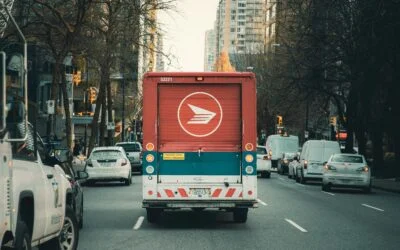“Low speed” doesn’t mean low risk. Parking lots and decks concentrate cars, pedestrians, strollers, carts, delivery vans, and rideshares in tight, poorly marked spaces—often with blind corners and dim lighting. Back-out collisions, angle-parking sideswipes, slip or trip hazards near wheel stops, and pedestrian knockdowns can cause concussions, herniated discs, shoulder and knee injuries, fractures, and lasting anxiety about crowded areas. If you’re hurt in a lot or garage, the steps you take in the first 24–48 hours can protect your health and your Georgia injury claim.
Why lots and decks are uniquely dangerous
Parking aisles are narrow, sight lines are blocked by SUVs and columns, and drivers split attention between phones, parking apps, and passengers. Common crash patterns include: (1) two vehicles backing at the same time; (2) a driver reversing fast across a live aisle; (3) a car cutting diagonally through empty spaces; (4) dooring or mirror strikes in tight lanes; and (5) pedestrians hit in crosswalks or at pay kiosks. In garages, glare, shadows, oil slicks, broken wheel stops, and poorly placed speed bumps increase risk—especially at night or in rain.
Fault and premises liability can overlap
Georgia is a fault state. A negligent driver is responsible for injuries they cause—failing to yield while backing, speeding in aisles, or driving while distracted. But a property owner or manager may share responsibility when unsafe conditions contribute, such as: burned-out lights, missing or faded crosswalks, slippery surfaces from chronic oil leaks, broken curbs or wheel stops, blocked sight lines from unsecured signage, or malfunctioning traffic gates. Sorting out both driver negligence and premises hazards early can expand the available insurance and increase total recovery.
Special situations we see often
- Rideshare pickups and drop-offs: App distractions, double-parking, and passenger loading in travel lanes; commercial coverage may apply depending on trip status.
- Delivery trucks and box vans: Blind-spot backing and tight turns near loading docks; employer policies can bring higher limits.
- Hit-and-run with minimal damage: Small dents, big injuries—especially to pedestrians; UM/UIM coverage may step in if the driver flees.
- Trip hazards at pay stations: Broken concrete, uneven mats/cords, or dim lighting where foot traffic is predictable; report in writing and get an incident number.
What to do right after a lot or deck incident
- Call 911 and get medical evaluation. Concussion, neck/back, and joint injuries often show up hours later; early records link symptoms to the incident.
- Photograph the scene before it changes. Take wide shots of stall lines, aisle directions, mirrors, columns, signage, lighting, and any hazards (oil, broken wheel stop, pothole). Then capture close-ups of damage, skid paths, shoe prints, or residue.
- Map the approach. Shoot photos from your perspective: where you walked or drove, what you could see when backing or crossing, and any view blocked by larger vehicles.
- Identify witnesses and cameras. Get contacts for attendants, security, store employees, and bystanders. Note camera domes and request preservation immediately—many systems overwrite in days.
- Report it—carefully. Ask for a written incident report with the property manager if a hazard contributed. Give only basics to insurers; decline recorded statements until you’ve spoken with counsel.
- Preserve footwear and clothing. Tread patterns and residues often prove how a slip or trip occurred.
- Follow treatment plans and keep a log. Track appointments, mileage, out-of-pocket costs, and how pain limits work or family life; consistent care strengthens your claim.
Common injuries and damages
Even at parking-lot speeds, impacts can cause whiplash and herniated discs, concussions (headache, brain fog, light sensitivity), shoulder and knee injuries, wrist/hand fractures from bracing, facial trauma from airbag deployment, and psychological distress. Recoverable damages in Georgia include ER and follow-up care, imaging and therapy, future medical needs, lost wages or reduced earning capacity, pain and suffering, and repair or total loss of your vehicle. Don’t forget necessary replacements—glasses, phones, laptops, and child car seats damaged in the incident.
Insurance paths that may apply
- At-fault driver’s liability policy (primary for vehicle-on-vehicle or pedestrian strikes).
- Premises liability policy (unsafe conditions like poor lighting, broken curbs, slick surfaces, or defective gates).
- Commercial policies (delivery fleets, rideshare on-app status, security contractors).
- Your coverages: MedPay for immediate bills regardless of fault; UM/UIM if the at-fault driver flees or has low limits; health insurance to keep treatment moving.
Mistakes that reduce case value
Leaving without photos of the hazard or lighting, giving a recorded statement too early, gaps in treatment, posting about the incident on social media, and accepting a quick low offer before the medical picture is clear.
Prevention tips for your next visit
Drive at walking speed, keep headlights on in decks, pause before backing to re-check both sides, and never cut diagonally across spaces. As a pedestrian, use marked routes, avoid walking behind reversing vehicles, and be extra cautious near elevators, pay stations, and dark corners. Report lighting outages or hazards to management in real time—your report can help the next person avoid injury.
How Gunn Law Group proves lot and deck cases
We move fast to secure what disappears first: CCTV, body-cam, and 911 audio; dash-cam footage; incident reports; maintenance logs; lighting and slip-resistance measurements; and gate or access-control data. We coordinate with your medical providers to document the full impact on your life and identify every available policy—driver, premises, employer, and your own UM/UIM—so one minimal limit doesn’t cap your recovery. Then we negotiate from evidence, not guesses.
If a parking lot or garage turned a quick stop into a long recovery, don’t go it alone. Need a home run? Call the Big Gunn at 888-BIG-GUNN for a free case review with an Atlanta personal injury lawyer who knows how to win these complex, low-visibility claims.




